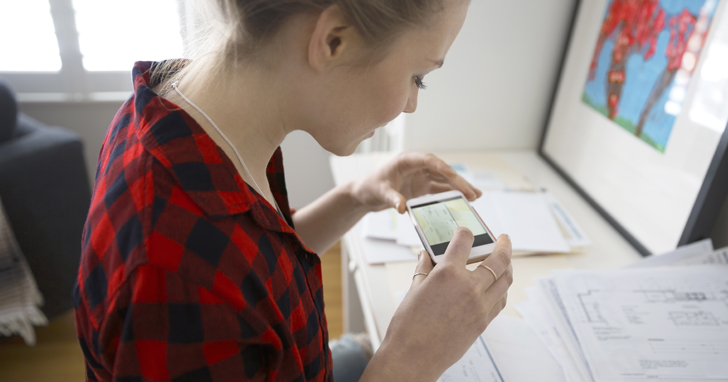Learn
How Much Money is Available in My Checking Account?

A negative checking account balance is something that everyone wants to avoid. After all, who wants to pay overdraft fees or risk bouncing an important check? But your available balance doesn't always seem to sync up with how much money you think you have.
Here's what you need to know to understand how much money is really in your account — and how to avoid overdraft fees.
When Your Available Balance Is Not Your 'Real' Balance
Many people assume that all you need to do to prevent overdraft fees is check your available balance, which is easy enough to do through digital banking tools, telebanking, or even an ATM. But while that's not a bad starting place, your available balance doesn't always reflect how much money is truly available.
Here's why: When the bank shows your available balance, it does not include items that haven't been presented to your bank yet for payment. This includes checks that haven't been cashed yet and recurring payments (like a gym membership or health insurance premium) that haven't yet processed through your checking account.
If you spend all of your available funds before these outstanding checks and recurring items are debited from your account, you risk overdrawing your account and incurring significant fees. That's why it's critical to keep track of items that haven't yet been paid from your account.
 With some types of deposits — like checks written from an account at another bank — it can take up to five business days before funds are available.
With some types of deposits — like checks written from an account at another bank — it can take up to five business days before funds are available.
Why That Emergency Deposit May Not Be Enough
Just because you make a deposit to your bank account doesn't mean that money is instantly available. That's because the bank needs to verify that the deposit is legitimate. That's why the bank may place a hold on your money while they wait for the issuing bank to send the money to them.
In an article for The Balance, Certified Financial Planner Justin Pritchard outlines typical funds availability policies.1
Deposits that are generally available quickly (within one business day) include:
- Cash
- Money orders and official bank checks (such as cashier's checks)
- Checks issued by the U.S. Treasury (such as Social Security or your tax refund)
- Checks for $200 or less (for checks that are over $200, the first $200 may be available within one business day)
- Checks drawn on the same bank where you're making the deposit
- Wire transfers
- Direct deposits (such as from an employer)
On the other hand, there are other types of deposits that can take up to five business days before funds are available:
- Deposits over $5,000 from a source that would otherwise allow you access to the funds within one business day (such as money orders, cashier's checks, checks from the U.S. Treasury, wire transfers, etc.). In these cases, the first $5,000 is typically accessible within one business day.
- Checks written from an account at another bank
- Redeposited checks (checks that bounced the first time, regardless of source or amount)
Pritchard also warns that it's important to understand by what time you must make a deposit for it to count as a same-day transaction. Some banks may give you until the time the branch closes, while others may set a cutoff sometime in the afternoon (say, 2:00 p.m. or 3:00 p.m. local time).
If you're going to be cutting it close, it's important to understand your bank's specific funds availability policy to avoid any problems or overdraft fees. If you deposit a check inside your local bank branch, ask your teller when you can expect your funds to be available.
When Are Deposits Available To Be Used?
When your bank settles deposits and payments at the end of the business day, they typically process items in a particular order. It's important to understand the policies at your bank, especially if you are at risk of overdrawing your account.
At Synovus, deposits that will be available on the next business day are credited to your account first. Then, we deduct funds for any transactions that are set to be paid out that day. This means that any deposit amounts that have cleared are available to be used for those payments.
How Do I Check My Available Balance Online?
Synovus customers can easily access account information online through personal computer or mobile devices using My Synovus. Check your available balance, pay bills, transfer funds, deposit checks, and sign up for alerts. Banking has never been easier.
Still have questions? We're here to help. Call us at 1-888-SYNOVUS (1-888-796-6887) or visit your local branch to get answers and learn more about our funds availability policy and overdraft protection options.
Important disclosure information
- Justin Pritchard, "Understanding Funds Availability Policies at Your Bank," The Balance. Published May 31, 2022, accessed May 13, 2024. Back

